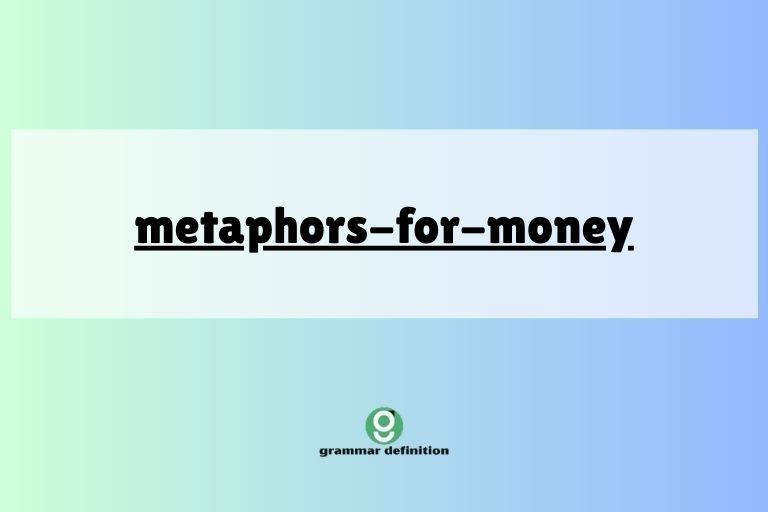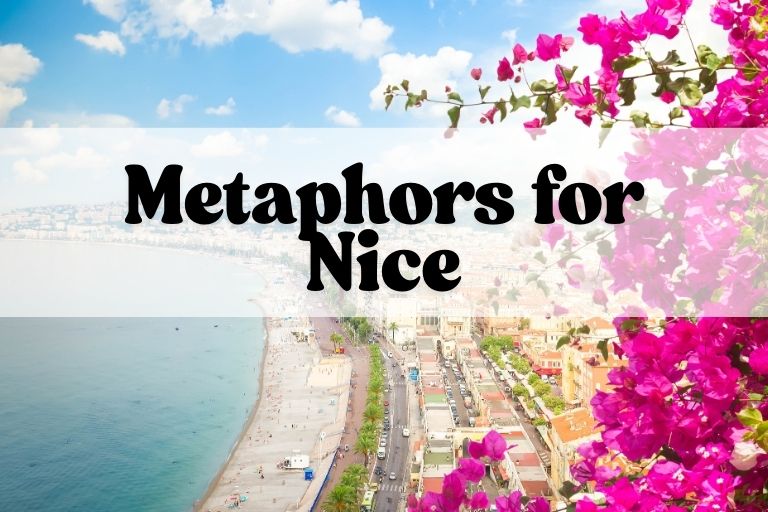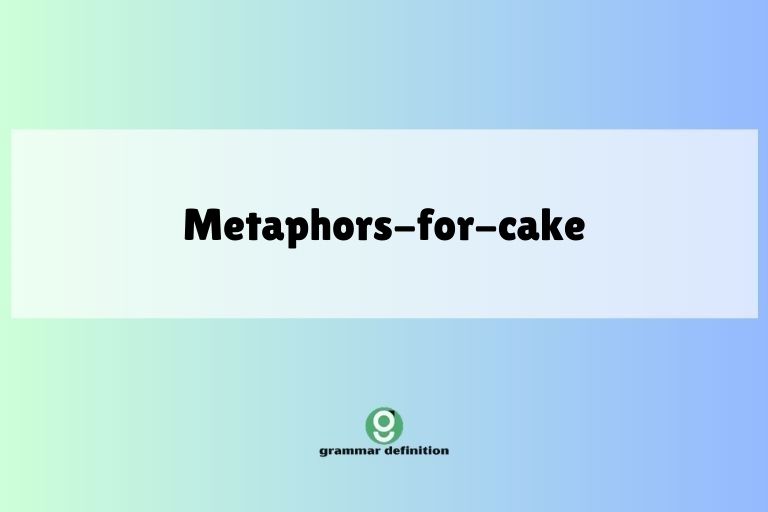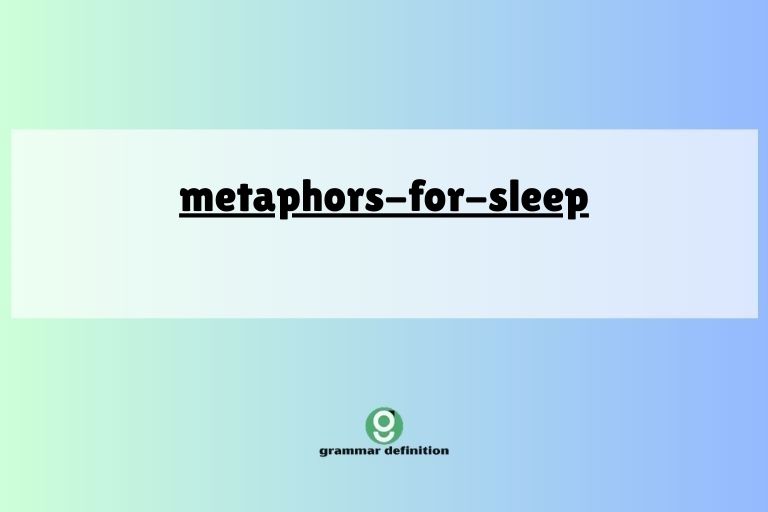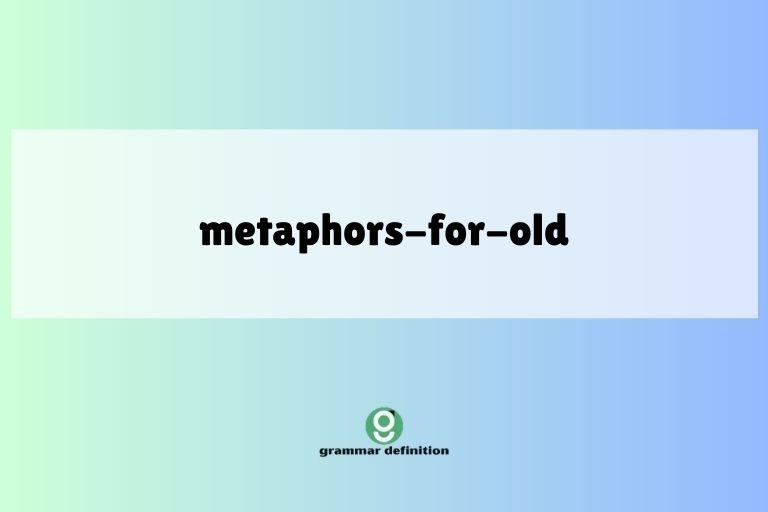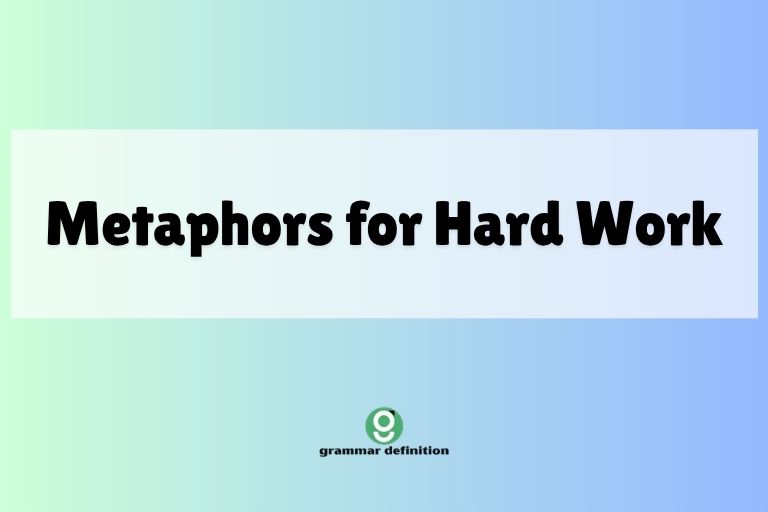Metaphors for Blue: Exploring Figurative Language
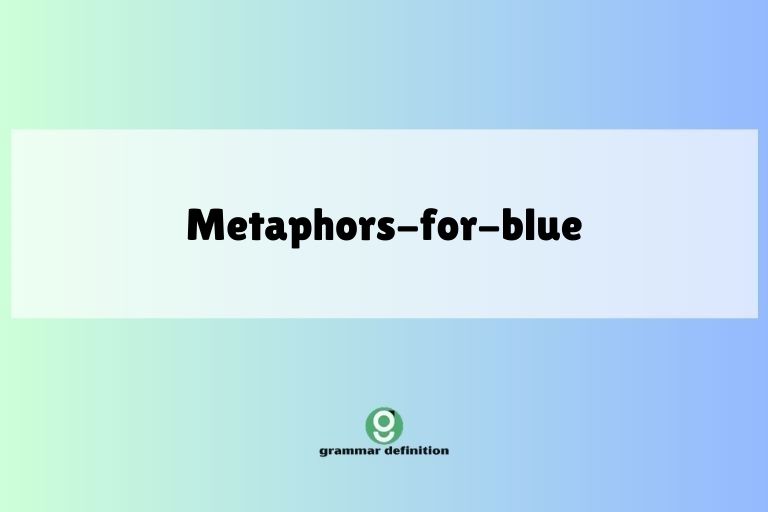
Metaphors are powerful tools in the English language, allowing us to express complex ideas and emotions in vivid and imaginative ways. The color blue, with its rich associations and diverse shades, is a particularly fertile ground for metaphorical expression.
Understanding how blue is used metaphorically can significantly enhance your comprehension of literature, poetry, and everyday conversation. This article will delve into the various metaphors associated with blue, providing clear definitions, examples, and practice exercises to help you master this fascinating aspect of figurative language.
Whether you’re an English language learner, a student of literature, or simply someone who enjoys exploring the nuances of language, this guide will equip you with the knowledge and skills to appreciate and use metaphors for blue effectively.
Table of Contents
- Introduction
- Definition of Metaphor and Blue Symbolism
- Structural Breakdown of Metaphors
- Types of Metaphors for Blue
- Examples of Metaphors for Blue
- Usage Rules for Metaphors
- Common Mistakes with Metaphors
- Practice Exercises
- Advanced Topics in Metaphorical Usage
- Frequently Asked Questions
- Conclusion
Definition of Metaphor and Blue Symbolism
A metaphor is a figure of speech that directly compares two unrelated things, asserting that one thing *is* another. Unlike a simile, which uses words like “like” or “as” to make a comparison, a metaphor implies a resemblance without explicitly stating it. Metaphors are used to add depth, color, and emotional resonance to language, making it more engaging and memorable.
The color blue carries a wide range of symbolic meanings across cultures and contexts. It is often associated with: calmness, peace, stability, trust, wisdom, intelligence, sadness, melancholy, and the infinite (like the sky and sea). The specific shade of blue can further influence its metaphorical meaning; for example, a vibrant cerulean might evoke feelings of energy and creativity, while a deep navy might suggest authority and formality. Understanding these associations is crucial for interpreting and using metaphors effectively.
Structural Breakdown of Metaphors
Metaphors, while seemingly simple, have an underlying structure that contributes to their effectiveness. The core components are the tenor, the vehicle, and the ground. The tenor is the subject being described, the vehicle is the thing it’s being compared to, and the ground is the shared characteristic or association that makes the comparison meaningful.
For example, in the metaphor “He was drowning in a sea of despair,” the tenor is “He,” the person experiencing despair. The vehicle is “a sea of despair,” which evokes images of vastness and overwhelming force. The ground is the shared sense of being overwhelmed and helpless. Recognizing these components helps us understand how metaphors work to create meaning and impact.
Types of Metaphors for Blue
Metaphors for blue can be categorized based on the types of associations they evoke. Here, we’ll explore four main categories: emotional, intellectual, physical, and spiritual.
Emotional Blue
Emotional metaphors for blue often relate to feelings of sadness, melancholy, and loneliness. The phrase “feeling blue” is a classic example, representing a state of low spirits or depression.
Other metaphors in this category might describe someone as having a “blue mood” or seeing the world through “blue-tinted glasses,” indicating a pessimistic or sorrowful outlook.
Intellectual Blue
In contrast to emotional connotations, blue can also represent intelligence, wisdom, and clarity of thought. Metaphors in this category might describe someone as having a “blue-sky thinking” approach, meaning they are innovative and imaginative.
A “blueprint” is a detailed plan, typically rendered in blue, representing a clear and structured approach to a project. Blue can represent well-reasoned, logical thinking.
Physical Blue
Physical metaphors for blue relate to the color’s presence in the natural world, such as the sky, the sea, or certain gemstones. These metaphors often evoke feelings of vastness, tranquility, and beauty.
Examples include describing someone’s eyes as “pools of blue” or comparing a landscape to a “blue canvas,” highlighting its expansive and serene qualities. The “blue planet” is a common metaphor for Earth, emphasizing its abundance of water.
Spiritual Blue
Blue can also represent spirituality, divinity, and the infinite. In some cultures, blue is associated with heaven and the heavens, symbolizing a connection to a higher power or a sense of transcendence.
Metaphors in this category might describe someone as having a “blue aura,” suggesting a sense of peace and spiritual enlightenment. The “blue yonder” often represents the vast unknown of the future or the afterlife.
Examples of Metaphors for Blue
To further illustrate the different types of metaphors for blue, here are several examples organized by category. Each table contains a variety of metaphors, demonstrating the diverse ways in which blue can be used figuratively.
Emotional Metaphors
The following table presents examples of emotional metaphors using blue. These examples highlight feelings of sadness, depression, and melancholy.
| Metaphor | Explanation |
|---|---|
| He was feeling blue after the breakup. | He was feeling sad or depressed. |
| A blue mood hung over the house. | A pervasive feeling of sadness was present. |
| She saw the world through blue-tinted glasses. | She had a pessimistic or sorrowful outlook. |
| The blues had wrapped around her heart. | She was deeply affected by sadness. |
| He was drowning in a blue sea of despair. | He was overwhelmed by feelings of hopelessness. |
| His spirit was painted in shades of blue. | He was experiencing a profound sense of sadness. |
| The weight of sorrow turned his world blue. | His sadness permeated every aspect of his life. |
| Her heart was a blue, frozen lake. | She was emotionally cold and distant. |
| A blue fog settled over her thoughts. | Her thoughts were clouded by sadness. |
| The news left him with a deep blue feeling. | The news filled him with a profound sense of sadness. |
| Her laughter was a distant echo in a blue room. | Her happiness was overshadowed by her sadness. |
| His memories were fading into a blurry blue. | His memories were tinged with sadness and regret. |
| The silence was a heavy, blue blanket. | The silence was oppressive and filled with sadness. |
| She carried a blue flame of melancholy within her. | She harbored a deep-seated sense of sadness. |
| His dreams were painted in somber blues. | His dreams were filled with sadness and despair. |
| The city lights seemed like cold, blue tears. | The city lights evoked a feeling of urban loneliness. |
| He felt like a solitary blue note in a silent song. | He felt isolated and out of place. |
| Her soul was a deep, blue ocean of sorrow. | Her soul was filled with a vast and profound sadness. |
| The rain washed away the colors, leaving only blue. | The rain intensified the feeling of sadness and loss. |
| His heart was a bruised blue. | His heart was damaged and filled with sadness. |
| She wore her sadness like a blue cloak. | She openly displayed her sadness to the world. |
| His future stretched before him, a long blue road. | His future seemed bleak and uncertain. |
| The music filled the room with a blue resonance. | The music evoked a deep sense of sadness. |
| He was lost in a blue labyrinth of his own making. | He was trapped in his own sadness and despair. |
| Her eyes were pools of blue sorrow. | Her eyes reflected her deep sadness. |
Intellectual Metaphors
The subsequent table provides examples of intellectual metaphors using blue, representing intelligence, wisdom, and clarity of thought.
| Metaphor | Explanation |
|---|---|
| He approached the problem with blue-sky thinking. | He used innovative and imaginative ideas. |
| The blueprint for the project was meticulously detailed. | The plan was clear, structured, and well-defined. |
| She had a blue mind, always calm and focused. | She had a calm, clear, and focused mind. |
| His ideas were as clear as a blue sky. | His ideas were easily understood and insightful. |
| The blue light of reason guided his decisions. | His decisions were based on logic and rationality. |
| She saw the solution in a flash of blue insight. | She had a sudden, clear understanding of the problem. |
| His mind was a blue ocean of knowledge. | He possessed a vast and deep understanding of many subjects. |
| He drafted a blue strategy for the company’s growth. | He created a well-defined and strategic plan. |
| She had a blue perspective on the situation. | She had a clear and insightful understanding of the situation. |
| His thoughts were as organized as a blue grid. | His thoughts were structured and well-organized. |
| She navigated the complexities with a blue compass. | She used her intelligence to guide her through challenges. |
| His explanations were as clear as blue water. | His explanations were easy to understand. |
| He had a blue understanding of the market trends. | He had a clear and insightful understanding of market trends. |
| She approached the problem with a blue approach. | She approached the problem with a smart and thoughtful approach. |
| His analysis was as precise as a blue laser. | His analysis was accurate and focused. |
| The project was laid out in a blue framework. | The project was well-structured and clearly defined. |
| She had a blue grasp of the subject matter. | She had a thorough and insightful understanding. |
| His arguments were as solid as a blue block. | His arguments were strong and well-supported. |
| She presented her ideas with blue clarity. | She presented her ideas in a clear and understandable manner. |
| His vision for the future was as clear as a blue sky. | His vision was optimistic and well-defined. |
| She had a blue strategy for success. | She had a clear and effective plan for achieving her goals. |
| His mind was a blue library of information. | His mind contained a vast amount of knowledge. |
| She approached the task with a blue focus. | She approached the task with clear and unwavering attention. |
| His knowledge was as deep as a blue well. | His knowledge was profound and extensive. |
Physical Metaphors
The following table contains physical metaphors using blue, relating to elements in the natural world like the sky and sea.
| Metaphor | Explanation |
|---|---|
| Her eyes were pools of blue. | Her eyes were a deep, beautiful blue color. |
| The landscape was a blue canvas. | The landscape was vast, serene, and beautiful. |
| Earth is our blue planet. | Earth is characterized by its abundance of water. |
| The mountains faded into a blue distance. | The mountains appeared distant and hazy. |
| The river was a ribbon of blue winding through the valley. | The river was a long, narrow strip of blue water. |
| The sky was a blue dome overhead. | The sky appeared as a vast, blue-colored covering. |
| The ocean was a blue expanse stretching to the horizon. | The ocean was vast and seemingly endless. |
| The fields of lavender created a blue haze. | The lavender fields gave off a soft, blue-colored mist. |
| His veins were rivers of blue beneath his skin. | His veins were visible and blue in color. |
| The glaciers were blue sculptures in the landscape. | The glaciers were large, blue-colored formations. |
| The lake was a blue mirror reflecting the sky. | The lake’s surface reflected the sky perfectly. |
| The bluebells formed a carpet of blue in the woods. | The bluebells covered the ground with blue flowers. |
| The distant hills were a blue silhouette. | The hills appeared as a dark blue outline. |
| The bird’s feathers were a flash of blue. | The bird’s feathers were brightly colored blue. |
| The twilight painted the sky in shades of blue. | The evening sky was filled with blue hues. |
| The sea was a restless blue heart. | The sea was dynamic and full of life. |
| The mountains were crowned with blue ice. | The mountain tops were covered with blue-colored ice. |
| The valley was a blue bowl filled with mist. | The valley was a depression filled with blue-tinged fog. |
| The sky was a blue theater for the clouds. | The sky served as a backdrop for the clouds. |
| The night was a blue velvet curtain. | The night was dark, soft, and blue-tinged. |
| His gaze was lost in the blue horizon. | He was looking far into the distance, where the sky meets the sea. |
| The bay was a blue jewel nestled in the coast. | The bay was a beautiful and precious part of the coastline. |
| The canyon walls were striped with blue minerals. | The canyon walls contained layers of blue-colored minerals. |
| The waterfall cascaded down in a blue torrent. | The waterfall was a powerful stream of blue-tinted water. |
Spiritual Metaphors
The following table offers examples of spiritual metaphors using blue, representing divinity, transcendence, and the infinite.
| Metaphor | Explanation |
|---|---|
| She had a blue aura of peace. | She radiated a sense of calm and tranquility. |
| He gazed into the blue yonder. | He looked towards the vast unknown of the future. |
| Her soul was a blue sanctuary. | Her soul was a place of peace and refuge. |
| He sought solace in the blue silence of meditation. | He found comfort in quiet contemplation. |
| The universe was a blue tapestry of stars. | The universe was a beautiful and intricate creation. |
| She felt a blue connection to the divine. | She felt a strong spiritual connection. |
| His spirit soared into the blue heavens. | His spirit transcended earthly limitations. |
| The music evoked a blue sense of the infinite. | The music created a feeling of vastness and boundlessness. |
| She found enlightenment in the blue depths of her soul. | She discovered inner wisdom and understanding. |
| His prayers ascended into the blue expanse. | His prayers reached towards a higher power. |
| The temple was a blue beacon of hope. | The temple offered spiritual guidance and comfort. |
| She felt a blue resonance with the cosmos. | She felt a deep connection to the universe. |
| His faith was a blue anchor in the storm. | His faith provided stability and security during difficult times. |
| The ceremony was bathed in a blue light of spirituality. | The ceremony was filled with a sense of sacredness. |
| She sought guidance from the blue whispers of her intuition. | She trusted her inner wisdom and insight. |
| His heart was a blue altar of devotion. | His heart was dedicated to spiritual practice. |
| The universe was a blue symphony of creation. | The universe was a harmonious and beautiful entity. |
| She found transcendence in the blue embrace of nature. | She felt a sense of spiritual connection in the natural world. |
| His soul was a blue flame of enlightenment. | His soul was filled with wisdom and understanding. |
| She meditated under the blue canopy of the night sky. | She practiced meditation outdoors at night. |
| His path was guided by a blue star of destiny. | His life was influenced by a force beyond his control. |
| She found solace in the blue depths of contemplation. | She found comfort in deep and thoughtful reflection. |
| His mind was a blue temple of knowledge. | His mind was a place of wisdom and understanding. |
| The ancient texts offered blue insights into the human condition. | The texts provided profound and insightful understanding. |
Usage Rules for Metaphors
Using metaphors effectively requires careful consideration and adherence to certain guidelines. The most important rule is to ensure that the comparison is meaningful and relevant. A metaphor should enhance understanding, not confuse or obscure the message. Additionally, avoid mixed metaphors, which combine unrelated images and create nonsensical comparisons.
Another important consideration is context. The appropriateness of a metaphor depends on the audience and the situation. A metaphor that works well in a poem might be out of place in a scientific report. Finally, be mindful of overused metaphors, also known as clichés. While they may be easily understood, they lack originality and impact. Strive to create fresh and imaginative metaphors that capture the reader’s attention.
Common Mistakes with Metaphors
One of the most common mistakes is using mixed metaphors, which occur when two or more incompatible metaphors are combined in a single expression. This can create confusion and undermine the effectiveness of the writing. Another mistake is using clichéd metaphors, which are overused and lack originality. These metaphors can make writing sound dull and uninspired.
Another frequent error is using metaphors that are inappropriate for the context or audience. A metaphor that works well in one situation may be confusing or offensive in another. Finally, some writers use metaphors that are simply unclear or unrelated to the subject matter, making it difficult for the reader to understand the intended meaning.
| Incorrect | Correct | Explanation |
|---|---|---|
| The project is a rollercoaster ride on a slippery slope. | The project is a rollercoaster ride. / The project is a slippery slope. | Mixed metaphors create confusion. |
| He was as blue as the sky. | He was feeling blue. | The first one is a simile, not a metaphor, and doesn’t convey emotion. |
| Her ideas were a blue mess. | Her ideas were a blue ocean of thought. | The first one doesn’t use the color to describe anything good, which is not a common usage. |
| The company was sailing on a blue ocean of opportunity, but it was also a minefield. | The company was sailing on a blue ocean of opportunity. | Mixed metaphors make the writing unclear. |
| His heart was a blue brick. | His heart was a blue ocean of sorrow. | The metaphor must be relevant to the subject. |
Practice Exercises
Test your understanding of metaphors for blue with these exercises. Each question requires you to identify or create a metaphor using the color blue in a specific context.
Exercise 1: Identifying Metaphors
| Question | Answer |
|---|---|
| Identify the metaphor: “His future stretched before him, a long blue road.” | The metaphor is “a long blue road,” representing an uncertain future. |
| Identify the metaphor: “She had a blue aura of peace.” | The metaphor is “blue aura,” representing calm and tranquility. |
| Identify the metaphor: “The company was sailing on a blue ocean of opportunity.” | The metaphor is “blue ocean of opportunity,” representing vast potential. |
| Identify the metaphor: “Her eyes were pools of blue.” | The metaphor is “pools of blue,” representing deep blue eyes. |
| Identify the metaphor: “He approached the problem with blue-sky thinking.” | The metaphor is “blue-sky thinking,” representing innovative ideas. |
| Identify the metaphor: “The news left him with a deep blue feeling.” | The metaphor is “deep blue feeling,” representing profound sadness. |
| Identify the metaphor: “The project was laid out in a blue framework.” | The metaphor is “blue framework,” representing a well-structured plan. |
| Identify the metaphor: “Earth is our blue planet.” | The metaphor is “blue planet,” representing the abundance of water on Earth. |
| Identify the metaphor: “His mind was a blue ocean of knowledge.” | The metaphor is “blue ocean of knowledge,” representing vast understanding. |
| Identify the metaphor: “She sought solace in the blue silence of meditation.” | The metaphor is “blue silence,” representing peaceful contemplation. |
Exercise 2: Creating Metaphors
| Question | Answer |
|---|---|
| Create a metaphor for feeling sad after a loss. | His heart was a blue graveyard of memories. |
| Create a metaphor for someone who is very intelligent. | Her mind was a blue diamond, sharp and brilliant. |
| Create a metaphor for a peaceful and serene environment. | The garden was a blue oasis of calm. |
| Create a metaphor for a challenging and uncertain situation. | The journey ahead was a blue labyrinth of unknowns. |
| Create a metaphor for a moment of inspiration. | A blue spark ignited in her mind. |
| Create a metaphor for feeling lost and confused. | He was adrift in a blue fog of uncertainty. |
| Create a metaphor for a strong sense of faith. | Her faith was a blue shield against despair. |
| Create a metaphor for a vast and unexplored territory. | The new frontier was a blue wilderness of opportunity. |
| Create a metaphor for a deep and profound understanding. | His knowledge was a blue well of wisdom. |
| Create a metaphor for a feeling of loneliness. | He was a solitary blue figure in a crowd. |
Advanced Topics in Metaphorical Usage
For advanced learners, exploring the nuances of extended metaphors and mixed metaphors can provide a deeper understanding of figurative language. An extended metaphor is a metaphor that is developed over several lines or paragraphs, creating a more complex and nuanced comparison. Mastering extended metaphors can add significant depth and richness to writing.
Understanding the intentional use of mixed metaphors is another advanced topic. While generally considered an error, mixed metaphors can be used deliberately for comedic effect or to create a sense of disorientation. Analyzing the context and purpose of mixed metaphors can provide valuable insights into the writer’s intentions and the overall message of the text.
Frequently Asked Questions
Here are some frequently asked questions about metaphors for blue:
- What is the difference between a metaphor and a simile?
A metaphor directly compares two unrelated things, stating that one thing *is* another. A simile uses words like “like” or “as” to make a comparison, indicating a resemblance rather than an identity. For example, “He is a lion” is a metaphor, while “He is as brave as a lion” is a simile. - Why is blue often associated with sadness?
The association of blue with sadness likely stems from cultural and historical factors. In many Western cultures, blue has been linked to melancholy and sorrow, possibly due to its association with darkness, coldness, and the sea (which can be turbulent and dangerous). - How can I avoid using clichéd metaphors?
To avoid using clichéd metaphors, focus on creating original and imaginative comparisons. Think about the specific qualities you want to emphasize and look for unexpected connections between the subject and the vehicle. Read widely and pay attention to the metaphors used by other writers to develop your own unique style. - Is it always wrong to use mixed metaphors?
While mixed metaphors are generally considered an error, they can be used intentionally for comedic effect or to create a sense of disorientation. However, it’s important to use them sparingly and with careful consideration, as they can easily confuse or distract the reader. - How can I improve my ability to understand metaphors?
To improve your ability to understand metaphors, practice identifying the tenor, vehicle, and ground in different examples. Pay attention to the context and consider the potential associations and connotations of the words used. Read widely and analyze the metaphors used by different writers to expand your understanding and appreciation of figurative language. - Can the same shade of blue have different metaphorical meanings?
Yes, the specific shade of blue can influence its metaphorical meaning. A light, airy blue might represent freedom and inspiration, while a dark, somber blue might represent sadness and depression. The context in which the color is used is also important in determining its metaphorical meaning. - How do cultural differences affect the interpretation of blue metaphors?
Cultural differences can significantly affect the interpretation of blue metaphors. In some cultures, blue is associated with royalty and divinity, while in others, it is associated with mourning and sadness. It’s important to be aware of these cultural differences when interpreting metaphors, especially in cross-cultural communication. - What role does context play in understanding metaphors for blue?
Context is crucial for understanding metaphors for blue. The surrounding words, phrases, and overall situation provide clues about the intended meaning. Without context, it can be difficult to determine whether blue is being used to represent sadness, intelligence, spirituality, or some other association.
Conclusion
Metaphors for blue offer a rich and varied landscape for exploring figurative language. From expressing deep emotions to representing intellectual clarity and spiritual connections, blue serves as a powerful symbol in countless contexts.
By understanding the different types of metaphors associated with blue, as well as the rules and common pitfalls of metaphorical usage, you can greatly enhance your ability to communicate effectively and appreciate the beauty and complexity of the English language.
Continue to practice identifying and creating your own metaphors for blue, and pay attention to how this color is used metaphorically in literature, poetry, and everyday conversation. With continued effort and attention, you will develop a deeper understanding of this fascinating aspect of language and unlock new levels of creative expression.
Remember, the key to mastering metaphors is to embrace imagination, explore connections, and always consider the context in which you are using language.

